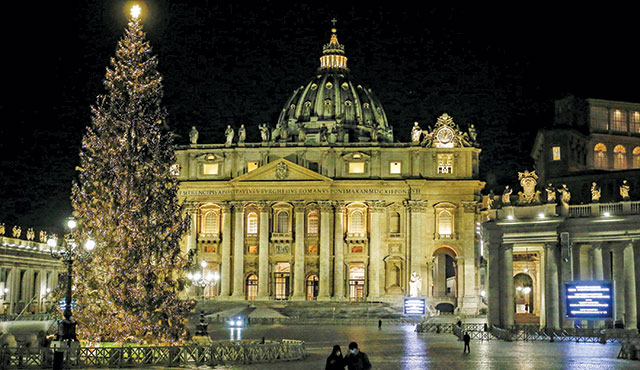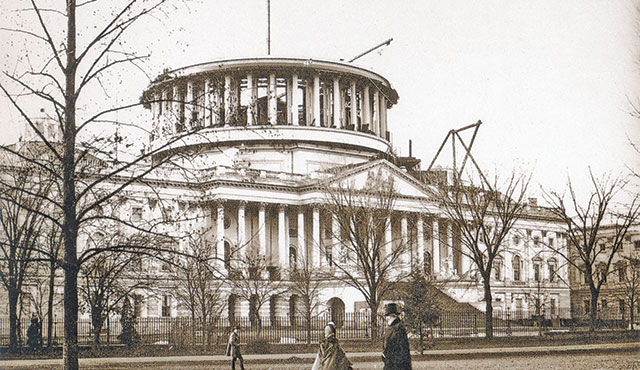The violent chaos within the United States Capitol building on Jan. 6 was a sober reminder of both the fragility of life — five people died from the attack — and the fragility of our constitutional republic. As a Classicist, the storming of restricted federal property reminded me of incidents in the closing decades of the Roman Republic, such as Appian’s tale of a mob storming the Forum to disrupt the election of consul Memmius, who was killed because of it. Or during the Roman Civil War when an enormous street fight was held between supporters of two rival politicians.
In those days, the senate house was the most hallowed building in the Republic. But even the building itself was not immune: it burned to the ground during the funeral of a rabble rouser populist named Publius Clodius Pulcher. Sulla and then Julius Caesar rebuilt it, renaming it Curia Julia. It was here where Caesar was headed when he was fatally attacked after naming himself dictator for life in 44 BC. Rome’s first emperor, Augustus, finally completed construction of the senate building.
The Founding Fathers of the United States recalled aspects of the Roman Republic when establishing our government. But when it came to constructing the United States Capitol building, the country’s version of the Roman senate house, architects looked less to the Curia Julia than to a different, far more impressive Roman structure — the Pantheon.
The Pantheon remains one of Rome’s most beloved buildings, with the Piazza della Rotonda a favorite gathering place before it, in less restrictive times, for tourist and Roman alike. Even after more than two millennia the Pantheon stands out as an architectural triumph. Like the senate house it, too, was completed during the reign of Emperor Augustus, and later became a Roman Catholic Church, the Basilica of St. Mary and the Martyrs, in 609. The Pantheon’s coffered dome is its trademark, the open-air oculus blasting natural light into the rotunda below.
That ancient dome served as the source of inspiration for America’s center of government. William Thornton was the first Capitol dome architect, winning a contest supervised by then-Secretary of State Thomas Jefferson during President Washington’s first term. Dr. Thornton’s schema directly evoked the Pantheon, and it was enhanced by the project’s second architect, Benjamin Henry Latrobe, before Charles Bulfinch brought it to completion in 1823 during the presidency of James Monroe.
That green copper dome topped the Capitol building until remodeling was needed in the mid-19th century, reflecting the growth in the country’s population. Philadelphia native Thomas U. Walter became the fourth Architect of the Capitol, with his plan for a new dome approved by President Franklin Pierce in 1855. For this refurbished look, Walter looked to various sources of inspiration, such as St. Paul’s Cathedral in London. But once again an American architect turned towards Rome. This time, it was another dome that defined the Roman landscape that inspired Walter — the massive dome of St. Peter’s Basilica.
The building of St. Peter’s required double the number of architects than the U.S. Capitol project — eight — simply by its sheer timespan for construction. Begun as a project under Pope Julius II in 1506, the basilica was not consecrated until 1626. And while many aspects of the basilica are renowned for its eye-popping architecture, such as Bernini’s colonnade and baldachinno, it is the dome that remains in a class by itself.
The story of St. Peter’s dome becoming a reality is an epic story all its own, but in referencing this most famous dome, Walter thus took inspiration from none other than Michelangelo — chief architect of St. Peter’s from 1547 to his death in 1564, and the principal visionary behind the dome we instantly recognize today.
As Walter stood on Michelangelo’s shoulders for the new Capitol dome, Michelangelo stood on the visual beauty of the Pantheon for his inspiration for St. Peter’s. But his goal was not just to make a dome that was pleasing to the eye. Rather, the architectural significance of the dome in Christian symbology is as a reflection of eternal life, the Communion of Saints enfolded in Trinitarian love. Michelangelo knew that the sacred beauty of St. Peter’s depended on the strength of its dome.
While the U.S. Capitol dome, of course, is not a religious building, by its architect drawing inspiration from Christendom’s most famous dome, something nevertheless sacred emanates from the top down. Something about the promise and hope that is the United States of America. It was a dome under construction during the dark years of the Civil War; it was on the steps under this dome on the night of September 11, 2001 when Congress gathered to sing “God Bless America.”
While the top of the Pantheon is the open-air oculus, leaving its rotunda susceptible to Rome’s Mediterranean weather, the Capitol oculus is a fresco from 1865, The Apotheosis of Washington, depicting the nation’s first president in a kind of heavenly realm under the banner of the United States motto, E plurbius unum — Out of many, one. The fresco’s painter was Constantino Brumidi, an immigrant to the United States in 1852. Prior to arriving in America, Brumidi worked, as it happened, in the Vatican, for Pope Gregory XVI on various art projects.
Thus, the Capitol building, the one which endured unspeakable, and, quite possibly, seditious violence and mayhem on Jan. 6, is a structure that merges the inspiration of sacred art with the solemn purpose of government. The country finds itself polarized, but confronting polarization was a theme which Pope Francis chose to address within that very building on September 24, 2015. “We know that in the attempt to be freed of the enemy without, we can be tempted to feed the enemy within. To imitate the hatred and violence of tyrants and murderers is the best way to take their place. That is something which you, as a people, reject,” he reminded Congress, and in turn, the American people.
The madness of Jan. 6 may have shaken the guardrails of democracy, and uncertainty may be gripping the American people at the present moment, but faith in the United States, in the enduring promise and hope that is the American project, cannot allow itself be toppled by a mob — particularly a mob ignorant of the sacred beauty which inspired the very building they stormed, attacked, and defiled.


